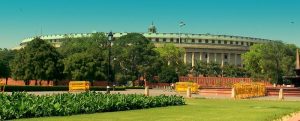8.0 Introduction

Elections in India are a monumental feat of logistics that defies comprehension. The election happens in seven waves over multiple weeks, and in 2024, over 600 million voters cast votes to elect 543 members of the lower chamber, called the Lok Sabha (Election Commission of India, n.d.). It’s an astounding effort, yet the government it produces isn’t necessarily representative of the greater population (Verma, 2024). Women are underrepresented compared to their proportion of the population, as are certain classes of India’s caste system (Verniers, 2024), and entire regions of the country (Vaishnav & Hintson, 2019). Governments in India also have a tendency to pass laws that people don’t like (Bhardwaj & Jadhav, 2024). Given those factors, can the election really be considered a success?
Many countries face similar challenges. There is sometimes a disconnect between the electoral system and the effectiveness of the governments it produces. Elections must successfully balance the need for responsiveness, representativeness, and citizen satisfaction. That’s what we will explore in this section.
Learning Objectives
By the end of this chapter, you should be able to:
- Explain how electoral systems are linked to governance
- Compare different electoral rules for increasing the representation of women
- Describe how electoral rules can impact voter turnout
Things we need to know
In this chapter, you can expect to encounter the following terms/concepts.
- Responsiveness
- Representativeness

